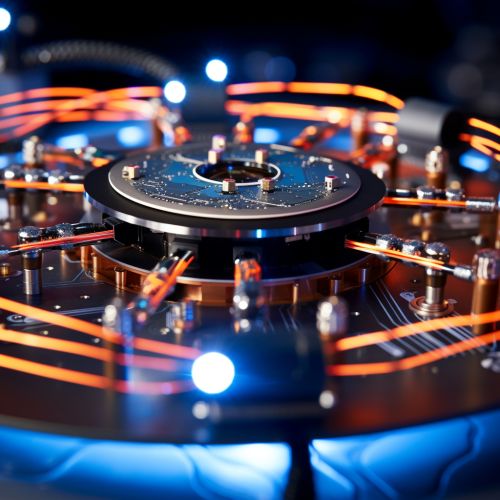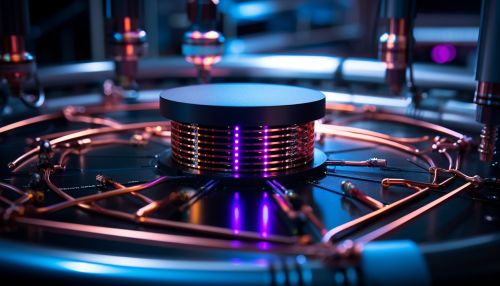Superconducting Quantum Interference Device
Introduction
A Superconducting Quantum Interference Device (SQUID) is a highly sensitive magnetometer used to measure extremely subtle magnetic fields, based on superconducting loops containing Josephson Junctions. SQUIDs are incredibly sensitive to changes in magnetic fields, with the ability to detect changes as small as 5 aT (5×10−18 T) with a few days of averaged measurements. Their sensitivity arises from the phenomenon of quantum tunneling and the properties of superconductors.


Principle of Operation
The operation of SQUIDs is based on the principles of superconductivity and quantum mechanics. A superconductor is a material that can conduct electric current with zero resistance when cooled below a certain temperature, known as the critical temperature. This property is exploited in the construction of a SQUID, where a superconducting loop is interrupted by one or more weak links known as Josephson junctions.
The Josephson junctions exhibit a unique property known as the Josephson Effect, which allows supercurrent to tunnel across the junction. This tunneling effect is a quantum mechanical phenomenon, and it is this property that gives the SQUID its extreme sensitivity to magnetic fields.
Types of SQUIDs
There are two main types of SQUIDs: DC SQUIDs and RF SQUIDs.
DC SQUIDs
DC SQUIDs have two Josephson junctions in parallel, and they are more sensitive than RF SQUIDs, but they also require more sophisticated electronics. The input current to a DC SQUID is split into two supercurrents that pass through the two Josephson junctions. The difference in the magnetic flux through the two halves of the SQUID loop causes a voltage across the SQUID.
RF SQUIDs
RF SQUIDs, on the other hand, have only one Josephson junction. They are less sensitive than DC SQUIDs, but they are simpler and cheaper to manufacture and operate. The operation of an RF SQUID is based on the modulation of the depth of the potential well of the Josephson junction by the magnetic flux through the SQUID loop.
Applications
Due to their extreme sensitivity to magnetic fields, SQUIDs have a wide range of applications. They are used in geophysics for magnetic anomaly detection, in medicine for magnetoencephalography (MEG), in physics for the detection of extremely small changes in magnetic fields, and in materials science for the characterization of materials.
